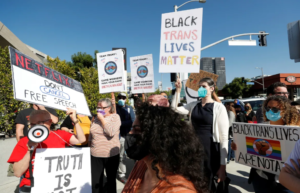Walk It Out

 by Nia Peake ‘23
by Nia Peake ‘23
Living in a time when speaking on progressive issues can be applauded or criticized, it is challenging to maneuver controversial topics. More recently, walk-outs have been a prevalent form of activism. In Loudon County, Virginia, several high school students participated in a walk-out in protest of how Loudon’s school board handled a sexual assault after it was allegedly revealed that the superintendent had been trying to protect the perpetrator in the incident. Another recent walk-out was done by Netflix employees after Dave Chapelle’s comedy special, which included transphobic jokes. These jokes caused transgender and non-binary Netflix employees not to feel seen and heard. While some might find walkouts ineffective, they are a powerful way to show solidarity with a cause.
Walkouts can be productive for a cause as they are a great way to show unity for marginalized groups and influence and spread awareness for a reason. Walkouts also promote allyship for an issue. Some might say that walkouts are performative and aren’t as effective as petitions. It’s important to note that while walkouts might seem insignificant, small acts of solidarity can branch out into a monumental change. Take the civil rights movement as an example. The movement began with sit-ins and has now transcended into relevant social justice movements like Black Lives Matter.